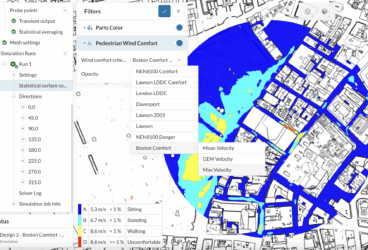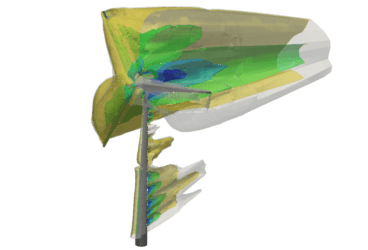Executing professionalism to a level of excellence has always been a great challenge. One must focus on their strengths and skills in order to figure out the best ways to empower, use and put them to work advantageously. Civil engineers are especially challenged, as attaining this level is even harder in the modern and globalized 21st century.
While advancements in information technology have opened a plethora of opportunities available to professionals, challenges to meet the demand for taller buildings, longer bridges, deeper tunnels, safer highways, and greener homes among other designs are becoming increasingly common for engineers.
Engineering skills are often classified into “hard” and “soft” categories, in an effort to distinguish between technical skills (e.g., structural design) and social skills (e.g., team leadership). Both are important in order to be successful, and both can equally benefit from the right kind of technical tools.
In the following, we will discuss a number of common areas where civil engineers can fall short, and the way they can leverage technology to avoid these pitfalls in order to get better results from their work. Here are five mistakes civil engineers should avoid:
Mistake 1: Failing to Effectively Communicate
Engineers are often marked as solo workers, lone wolves, or introverts. A stereotypical depiction is one that prefers smaller teams and working in isolated environments. Yet with the challenge of facing bigger more elaborate projects, there is a growing need for larger teams working collaboratively in order to complete work.
In turn, working in large teams creates a demand for effective communication tools. Traditional telecommunication tools from phones to emails often lack complete functionality, because they lack traceability and can be cumbersome and confusing. Can you remember the last time you dropped a call or lost an attachment? Other alternative channels must be in place for full accessibility between teams.
Collaboration tools include features such as chat, document sharing and hosting, task management, progress tracking, and traceability. These unified communication systems also boost security and protection for your business. Some popular services in this area to try are Microsoft Teams, Slack and Trello for team management and cloud apps such as Google Docs or Microsoft Office Online.
Mistake 2: Not Providing Quality Service as Civil Engineers
Today, the market is fully saturated with international projects and competition from all around the globe. A high quality of service represents a competitive advantage for civil engineers that can gain client fidelity and more. On the other hand, poor service is a mistake that can make the client search elsewhere for their next project.
Sometimes engineers fall in the trap of thinking that simply fulfilling requirements is enough to succeed. Complying with codes and providing a cost-effective solution is not enough for a project to succeed. Although these are important, client satisfaction is equally if not more important. Try to understand the client needs beyond technical requirements, or implement some of their ideas into the design. If you can make the client feel part of the project, and feel satisfied in all of their needs, that client will surely come back to you with more work.
Learn how to accurately predict wind loads on buildings without leaving the web browser. Watch the webinar below.
Mistake 3: Ignoring the Big Picture
Another common mistake in engineering is failure to consider the full environment of the project at hand, or having a holistic view. The impact of construction on its surroundings must always be considered and is a key component to a project’s success. This can include considerations for aesthetics harmony, environmental impact as well as future development.
In this aspect, code compliance draws the bare minimum requirements engineers and architects have to achieve. Exceeding these primary codes will ensure the success of the construction for its complete lifespan. Foreseeing and then optimizing factors such as carbon footprint, energy consumption, wind disruption, green materials, durability as well as aesthetic impact beyond code requirements brings a competitive edge to civil engineering projects.
Mistake 4: Stopping at Structural Calculations
One of the big changes that computers have brought to civil engineering is structural calculations. Numerical load and resistance analytics have allowed structural engineers to be more confident than ever. Structural code compliance and dimensioning is now a fully automated task. In turn, this allows engineers to focus on optimizing the structure for factors such as cost, aesthetics and failure safety.
Yet, computer calculations don’t stop at code-compliant driven structural analysis. The whole field of computer-aided engineering (CAE) brings tools for every engineering calculation task.

Some examples for fluid flow simulation (CFD) include predicting wind loads on buildings, ensuring pedestrian comfort in urban areas, validating ventilation and air conditioning, controlling air quality and contamination in cleanrooms, laboratories or underground spaces, and optimizing thermal comfort in working and living environments. Finite element analysis can be used for detailed stress analysis, dynamic seismic performance assessment and non-linear materials.
See, for example, the following video by The B1M, featuring the cloud-based simulation platform SimScale:
Mistake 5: Not Cultivating Enough CAD Creativity
With 3D CAD tools, visualizing the end result of a project is no longer a task for one’s imagination. The ability to model almost anything—from furniture to facades and their respective surrounding elements alongside photo-realistic rendering of the models—unleashes the possibility of foreseeing the aesthetics and visual impacts of the project in a way never possible before. The majority of civil engineers predictably already make use of these CAD tools. However, they might not be leveraging the full power of available software, which is a mistake.
Three-dimensional CAD models can be leveraged for many uses that can empower greater engineering activities. One example of this is virtually testing and optimizing the CAD models using FEA and CFD simulations. With the emergence of cloud-based tools like SimScale for simulation and Onshape for CAD, computing power capacity is no longer a limiting factor.
Another example of leveraging CAD models is through using virtual reality. With VR headsets, a civil engineering project can be explored in an immersive manner. This technology can augment the realism of the model, and the capacity of the civil engineers and architects involved.
Conclusion
The ability to learn new techniques through innovative tools to adapt to the advancing technological world we live in is increasingly important. The evolution of our workplaces due to the cutting-edge information technology era is a reality. Therefore, learning and adapting is key to mitigate the risk of being left behind.
If you enjoyed reading this article and the mistakes civil engineers should avoid, you might find this topic interesting: ASCE 7 | How to Comply with this Building Code and the Role of CFD.






